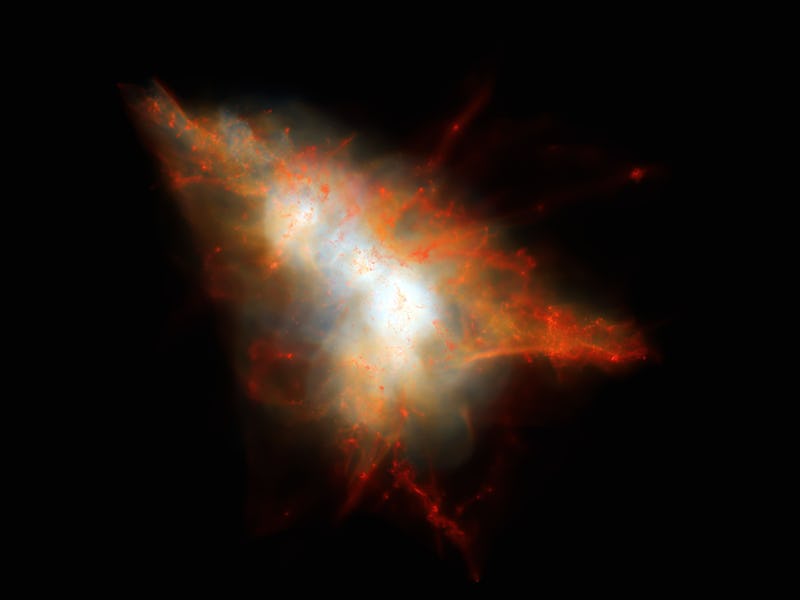Astronomers Discovered Hundreds of Baby Stars in Space Blobs
The cosmos is a strange place.

There’s a lot of gnarly stuff floating around in space, and sometimes the best way to describe it is to call it a blob. It’s just good science. Specifically, Lyman-alpha Blobs, or LABs, are giant clouds of hydrogen gas that can stretch out for thousands of light-years and are found throughout the far reaches of the universe. An international team of scientists have been studying LABs, and have figured what makes these big ol’ bodies of effervescent gas so bright and shiny — basically, LABs are mashed-up galaxies practically exploding with newborn stars.
Using the Atacama Large Millimeter/Submillimeter Array (ALMA) located in Chile, the research team took a closer look at the first ever discovered lab, affectionately named SSA22-Lyman-alpha blob 1, or LAB-1. Identified in 2000, LAB-1 is about 11.5 billion light-years away. In analyzing the light emitting from the cool dust clouds, the team found out there are a pair of galaxies at the heart of LAB-1 that are experiencing a frenzied birth of stars right now — at a rate over 100 times that of the Milky Way. For some context, the Milky Way typically spawns about seven new stars in a year. That means that a Lyman-alpha blob is pumping out roughly 700 new stars in the same time period.
The star formation is basically giving off a wave of ultraviolet light thats oozing of into hydrogen gas surrounding the galaxies, creating the effect glowing blob we know as LAB-1.
The new findings, to be published in the Astrophysical Journal, don’t exactly have any immediate implications or answers to practical questions, but they do provide a glimpse of the universe as a wee baby. The light were seeing is 11.5 billion light-years away — meaning we are essentially looking into a piece of the universe that’s 11.5 billion years old.
That’s certainly enough of a thought to give you the existential shakes.